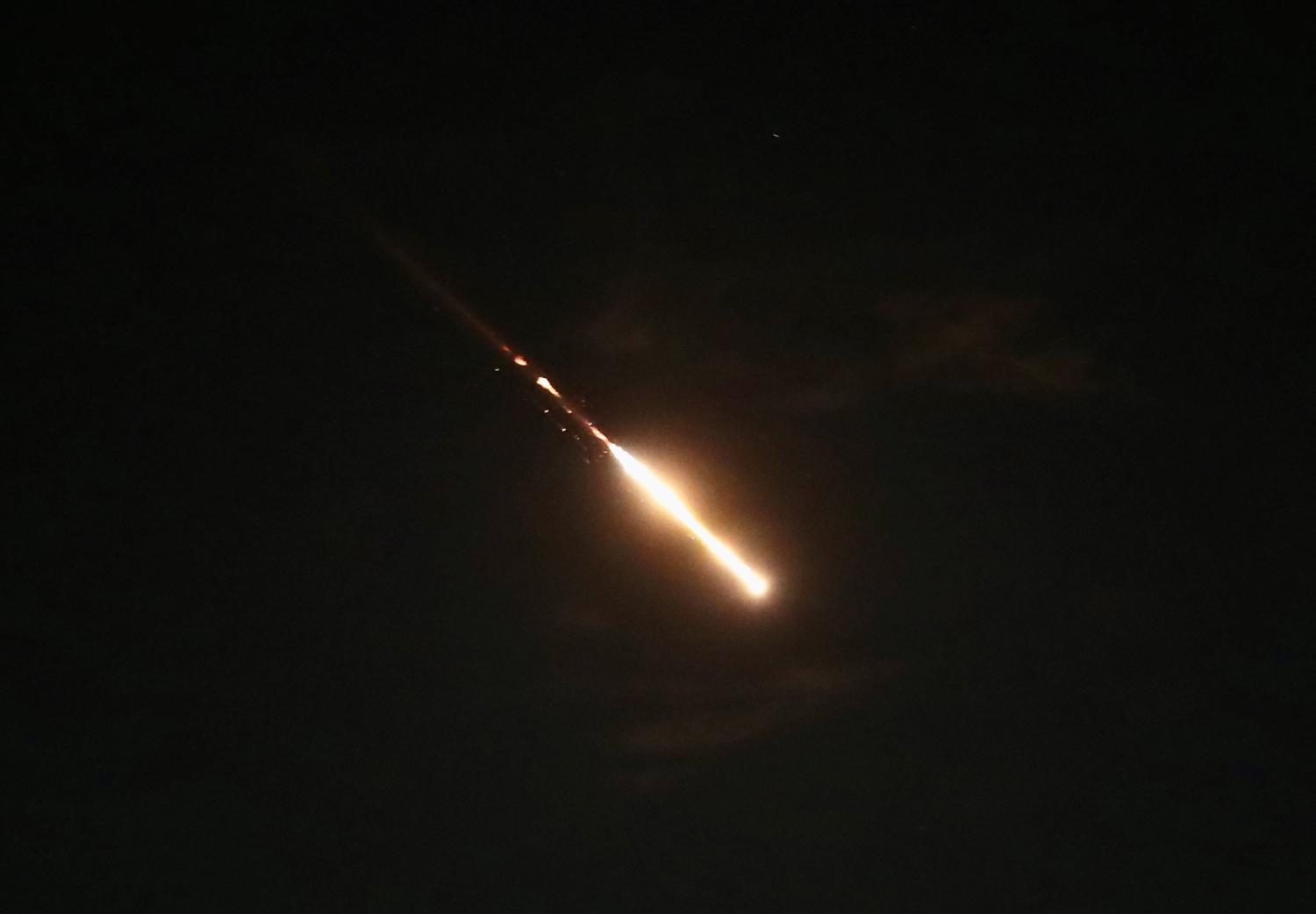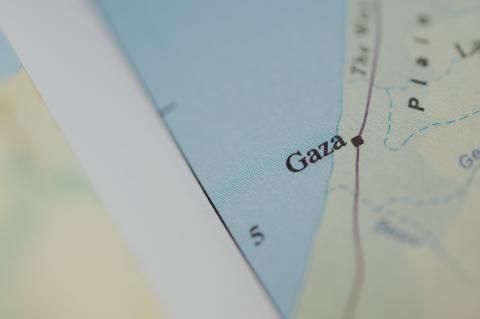Events in the Middle East over the weekend have brought the longstanding Israel-Iran shadow war into the spotlight, compounding fears that the Gaza conflict will spill over into a regional war. Iran and its proxy forces launched a barrage of drones and missiles in the first ever direct attack by Iran against Israeli territory. It was in retaliation for an earlier Israeli strike targeting and killing senior Iranian Revolutionary Guards Corps commanders at an embassy annex in Damascus. Israel’s war cabinet has spent the last few days deliberating how it will respond.
Recent events underline concern that the region is “slow marching” towards a regional war, even when escalation is not in the interest of any of the major players – Iran, Israel, nor the United States.
As with many aspects of this conflict, actions seem to defy Newton’s third law, with each action from Israel or Iran not necessarily having an equal and opposite reaction. Instead, each action has multiple and opposing reactions. The key is not to gauge which opposing impact will overcome or cancel out the other, but to acknowledge that they are happening at the same time.
Despite Iran’s unprecedented attack on Israel, the regime has clearly signalled that it prefers no further escalation. Iran claimed it gave Israel and Arab neighbours advance warning of the strike. After the attack, Iran’s mission to the United Nations issued a statement saying “The matter can be deemed concluded.”
Similarly, Israel appears cautious, so far stating it will respond “when the time is right”, despite notoriously hawkish Prime Minister Benjamin Netanyahu and hard right members of the cabinet pushing for an immediate response. Further constraining Israel is US President Joe Biden’s blunt warning that America will not participate or assist in any Israeli retaliatory action against Iran.
Yet the risk of escalation remains because there are a number of simultaneous inverse impacts of Iran’s direct strike on Israel.
Impacts on the war against Hamas
International pressure has grown on Israel over its conduct and military strategy in Gaza. The civilian death toll, further humanitarian impacts and a lack of clear strategic objectives of its military campaign has left Israel increasingly isolated internationally and at odds with its major ally.
Yet if Iran, as it claims, supports the aspirations of Hamas and champions the Palestinian people, this attack is a miscalculation. It shifted attention away from military operations in Gaza and boosted international support and sympathy for Israel, allowing more freedom to manoeuvre in its operations against Hamas.
However, Iran’s attack also sustains and heightens pressure on Israel’s operations against Hamas; most obviously, by dividing Israel’s attention between military operations in Gaza and preparing responses against Iran. Israel was about to embark on a ground offensive in Rafah, seeking to finish off Hamas battalions. Now distracted by Iran, the Rafah operation has been delayed, providing more breathing room for Hamas.
Impacts on Israel strategy regarding Iranian threat
The fact that Iran risked attacking Israel directly revealed a flaw in the Israeli strategic orthodoxy regarding Iran, which had been that Iran is best deterred by forceful action; the harder you hit Iran, the less likely that it will respond.
Israel boasted that its defence systems worked as intended and intercepted 99% of the drones and missiles lobbed from Iran. But more recent reports suggest that most of the aerial attack was deterred by the coordinated US military action before it even reached Israeli airspace. This explains Israeli trepidation as it weighs its options in response. The ground has shifted regarding Israel’s strategy of deterrence, with some former senior Israeli officials decrying the strike on Iran’s embassy compound in Damascus as a miscalculation.
But, really, was Iran’s response all that powerful? Over half of the weapons launched failed. Unless it uses proxy forces such as Hezbollah, Iran has few means to target Israel without incurring major risks to regime stability. The strike also demonstrates that Israel’s Arab partners such as Jordan, which was involved in the US–led operation to stymie the Iranian attack, will continue to cooperate on security matters despite worsening relations caused by Israel’s actions in Palestinian territories.
Impacts on Iran’s relationship with its proxies
Iran’s aerial attack originated from Iranian territory, but it also involved drones and missiles launched from Iraq, Syria and Yemen. Iran demonstrated its ability to command a wide constellation of proxies to act in a coordinated manner despite the setback that Israeli assassinations have had on Iran’s Quds Force leadership and operations.
Noteworthy, however, was the action of Hezbollah, Iran’s most powerful proxy partner. It fired off several rockets as part of Iran’s coordinated retaliation, which was nothing it hadn’t already been doing; Hezbollah and Israeli forces have been firing at each other daily since the start of the war. This further solidifies Hezbollah’s independent status. Hezbollah is one of – if not the most – powerful non-state actors in the world. If it was to turn its full capabilities against Israel, it would significantly bolster Iran’s limited military capabilities. So far, it has not.
These and other opposing impacts will continue to sway the ongoing dance between escalation and containment in the Middle East.

